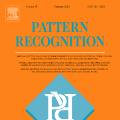This work aims at providing a new model for time series classification based on learning from just one example. We assume that time series can be well characterized as a parametric random process, a sort of Hidden semi-Markov Model representing a sequence of regression models with variable duration. We introduce a parametric stochastic model for time series pattern recognition and provide a maximum-likelihood estimation of its parameters. Particularly, we are interested in examining two different representations for state duration: i) a discrete density distribution requiring an estimate for each possible duration; and ii) a parametric family of continuous density functions, here the Gamma distribution, with just two parameters to estimate. An application on heartbeat classification reveals the main strengths and weaknesses of each alternative.
翻译:这项工作旨在根据仅仅从一个实例中学习,为时间序列分类提供一个新的模式。我们假定时间序列可以被描述为一个参数随机过程,一种隐藏半马尔科夫模型,代表着一个具有可变期限的回归模型的序列。我们引入了一种时间序列模式识别的参数随机模型,并提供了其参数的最大可能性估计值。特别是,我们有兴趣审查两种不同的状态期间表示:i)离散密度分布,要求对每一种可能的期限作出估计;和ii)连续密度函数的参数组,这里是伽马分布,只有两个参数可以估计。关于心跳分类的应用揭示了每种选择的主要长处和短处。




